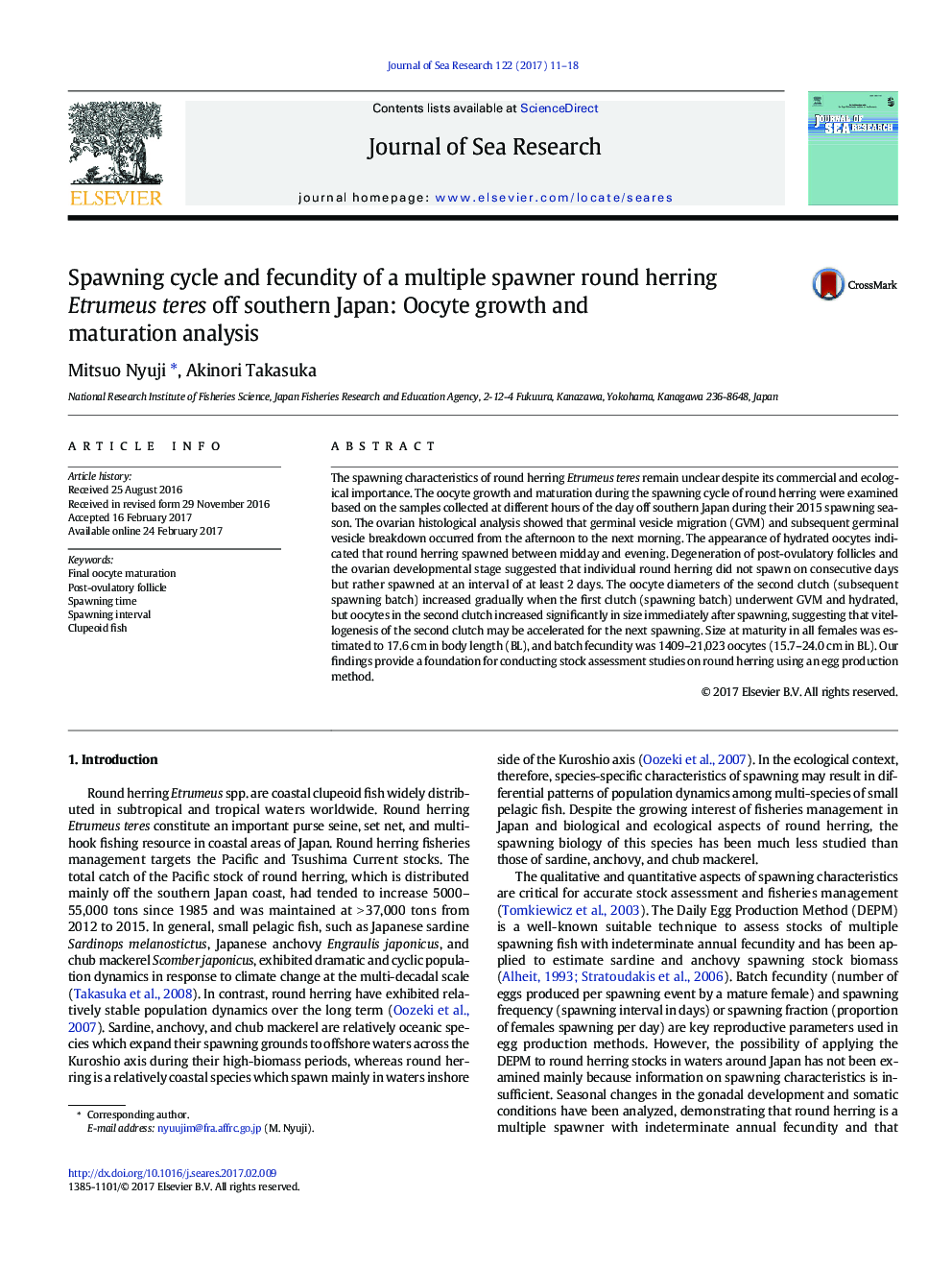| Article ID | Journal | Published Year | Pages | File Type |
|---|---|---|---|---|
| 5766111 | Journal of Sea Research | 2017 | 8 Pages |
â¢Final oocyte maturation occurred from afternoon to next midday in round herring.â¢Round herring spawned between midday and evening.â¢Round herring spawned at an interval of at least 2 days.â¢Oocyte growth of the second clutch may be accelerated immediately after spawning.â¢Batch fecundity was estimated as 1409-21,023 oocytes (15.7-24.0 cm in body length).
The spawning characteristics of round herring Etrumeus teres remain unclear despite its commercial and ecological importance. The oocyte growth and maturation during the spawning cycle of round herring were examined based on the samples collected at different hours of the day off southern Japan during their 2015 spawning season. The ovarian histological analysis showed that germinal vesicle migration (GVM) and subsequent germinal vesicle breakdown occurred from the afternoon to the next morning. The appearance of hydrated oocytes indicated that round herring spawned between midday and evening. Degeneration of post-ovulatory follicles and the ovarian developmental stage suggested that individual round herring did not spawn on consecutive days but rather spawned at an interval of at least 2Â days. The oocyte diameters of the second clutch (subsequent spawning batch) increased gradually when the first clutch (spawning batch) underwent GVM and hydrated, but oocytes in the second clutch increased significantly in size immediately after spawning, suggesting that vitellogenesis of the second clutch may be accelerated for the next spawning. Size at maturity in all females was estimated to 17.6Â cm in body length (BL), and batch fecundity was 1409-21,023 oocytes (15.7-24.0Â cm in BL). Our findings provide a foundation for conducting stock assessment studies on round herring using an egg production method.
